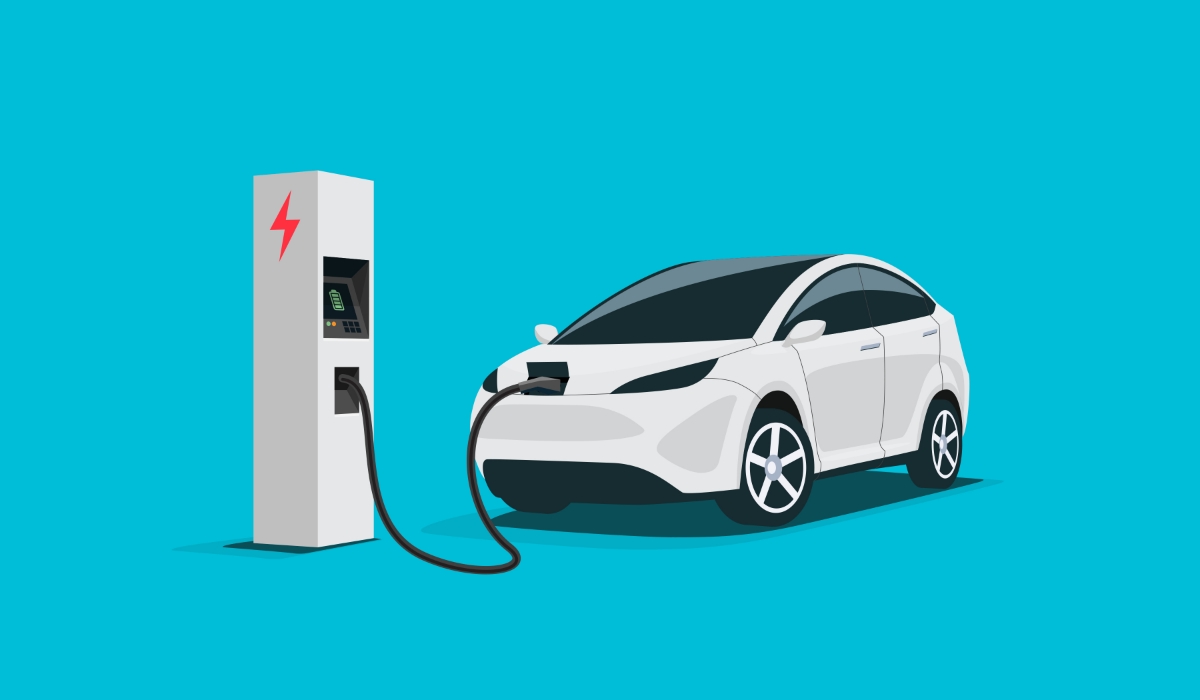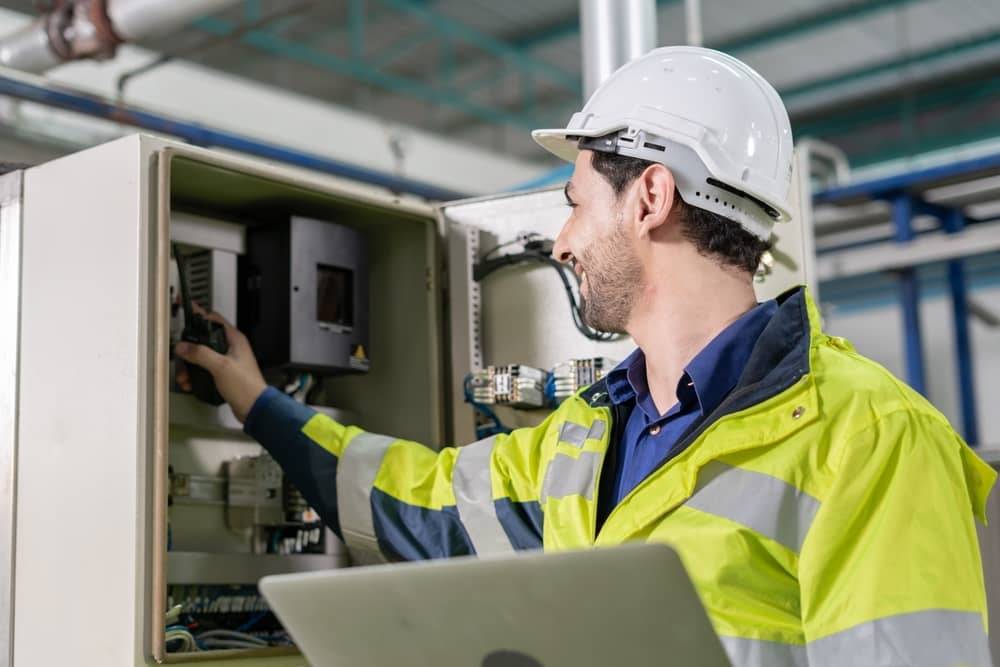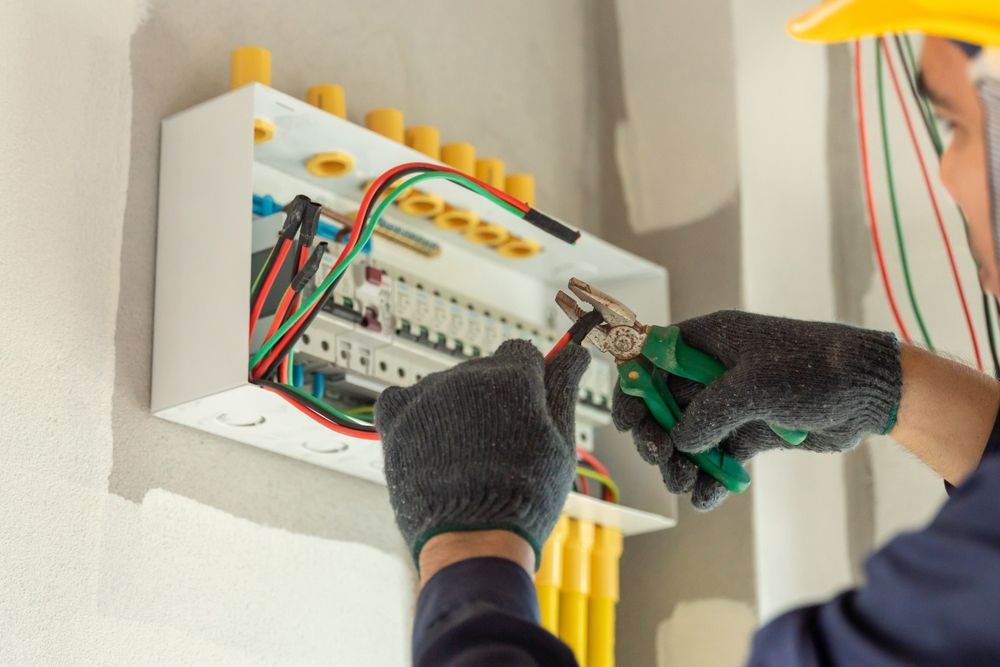- We are ready to help. Call Us!
 03 9738 2000
03 9738 2000 - Get in Touch

About to invest in an electric car? You might be wondering what requirements need to be met.
If this applies to you, we’re here to answer some of the most common questions. Most importantly, this article will dive into the currency guidelines around circuits and EV chargers in Australia.
Let’s not waste any more time and jump straight into it!
Yes. According to the Electric Vehicle Council (EVC) and AS/NZS 3000:2018 wiring rules, all electric vehicle supply equipment (EVSE) must be installed on a dedicated final sub-circuit.
These requirements apply to all EV charger types, whether it’s a simple wall-mounted AC charger or a high-capacity DC fast charger. If you’re ready to move forward with an installation, don’t hesitate to get in touch with the Maroondah Electrical team today! Otherwise, keep reading for a detailed breakdown.
Much like the vast majority of electrical work, only licensed contractors are allowed to install an EV charger in Australia. These are the exact same principles in place that prevent non-professionals from installing power points and other fixed electrical equipment. In this case, there are no ifs, and, or buts; the rules are set in stone and there is no wiggle room.
However, the installer doesn’t require additional training or certification that goes beyond their accreditation as a licensed electrician. This is distinctly different to solar installations, which do require certain qualifications.
Once the EV charger is set up, the owner doesn’t need to be a licensed electrician to use the portable charging cable (Source: EVSE Installation Guidelines).
Another important thing to understand is the differences between the types of EV chargers available. If you’re based in Melbourne (or anywhere else in Australia), the different classifications are as follows.
An entry-level charging method that uses a regular household socket and typically delivers 1.4 to 2.8 kW. It’s portable and convenient for occasional use, especially with plug-in hybrids that have smaller batteries.
However, charging will be slower, adding only about 10 to 12 km of range per hour. It’s suitable for overnight charging in low-demand situations, but not necessarily ideal for regular use with full battery electric vehicles due to the long wait times required for a full recharge.
Chargers with a significant speed upgrade to Level 1, which are often installed at homes, workplaces, or accommodation venues. Running on either single-phase (7 kW) or three-phase (up to 22 kW) power, they’re able to deliver roughly 35 to 130 km of driving range per hour.
These chargers typically use Type 2 plugs and may be tethered or socketed for flexibility. In general, Level 2 chargers are well suited for regular use and can fully recharge most EVs overnight. As an added bonus, they can also be integrated with solar systems to make use of renewable energy.
DC fast charging is built for speed, with power outputs ranging from 25 to 350 kW. These chargers are found in public locations and can add 150 to 300 km of range in just one hour. Some EVs can even charge to 80% in under 15 minutes.
All units come with tethered cables, most commonly using CCS2 connectors, though CHAdeMO is still supported by a few models. Level 3 charging is ideal for long trips or when rapid top-ups are needed, not for everyday home use.
Information sourced from RACV.
AS/NZS 3000:2018 (Clause 2.10.2.2 and Appendix P) mandates that EV chargers be connected to their own circuit, isolated from other loads. This reduces the risk of overloading and ensures that protective devices (such as circuit breakers and RCDs) are fully functional and operating correctly. Under this standard, any shared circuits are considered non-compliant.
Most home EV chargers draw a large current, which is often up to 32 amps for single-phase units. Placing this load on a shared circuit with lighting, power points, or appliances risks tripping breakers, overheating cables, and damaging other equipment. A dedicated circuit results in consistent and safe power delivery.
Dedicated circuits simplify the assessment of a property’s total electrical load, especially when load management systems are in place. They also make it easier to upgrade or replace the charger in the future without impacting other parts of the electrical installation.
Ready to get your EV charger installed? Maroondah Air is your best source for a licensed electrician in the Eastern Suburbs. We’re local, affordable, and always get the job done to a high standard!
Every EVSE circuit must be protected by a suitably rated circuit breaker, based on the EV charger’s maximum current draw and the wiring size. This protects the cable from overload and short-circuit faults.
EVSE installations must include RCD protection that complies with AS/NZS 3000 Appendix P. There are two key options:
Alternatively, an RCBO (a combined RCD and circuit breaker) is often used for simplicity and space-saving.
While not explicitly required by the current standard, the EVC strongly recommends an isolation switch near the EVSE. This allows electricians or emergency responders to disconnect the unit safely without accessing the switchboard. Some SIRs (Service and Installation Rules) in different states are moving toward requiring this.
The installer must size cables according to AS/NZS 3008.1.1, taking into account:
For a 32 A single-phase EVSE, 6 mm² copper cable is often the minimum required. External wiring or cable runs through driveways or open ground must have adequate mechanical protection (e.g. heavy-duty conduit or concrete encasement).
Although individual states have differing SIRs, the AS/NZS 3000 standard applies nationally, and the EVC supports a consistent interpretation. This avoids confusion over what amperage threshold might require a dedicated circuit. The position is simple: all EV chargers must be on a dedicated circuit, regardless of size.
A dedicated circuit is a mandatory requirement under Australian standards for all EVSE installations. It must include:
At Maroondah Electrical, we have licensed technicians ready to provide safe EV charger installations across Melbourne. We can send a qualified electrician to Brighton, Chadstone, Kew, or wherever you’re based!

Getting your very own electric vehicle is an exciting time, and we’re here to make the switch as smooth and stress-free as possible. Our electricians are highly skilled, insured, and accredited with various industry bodies in Victoria.
We’ll set you up with a dedicated circuit, then verify that the brand new charger is safe and ready for use. It’s time to experience the perks of working with an Industry Award Winning
Family Owned Business! Call 03 9738 2000 or get in touch right here online!

Most people barely think twice about their switchboard, at least until something goes wrong. However, this small, wall-mounted box is one of the most important safety features in any home or business. It’s the first line of defence against overloaded circuits, electrical shocks, and even fires. The real question is this: how do you know […]

No one likes to hear they’ve got an electrical issue at home, but trust us when we say that it’s always better to be safe than sorry; especially if the property needs rewiring. Leaving any potential electrical problem unaddressed leaves you vulnerable, all the way from damaged appliances to seriously dangerous house fires. So, how […]